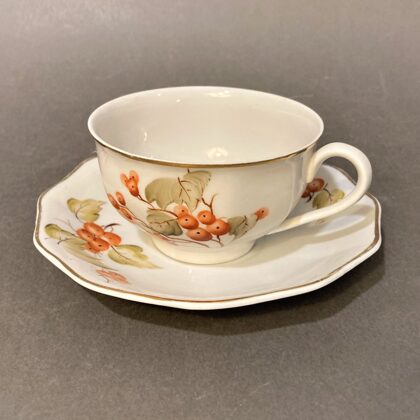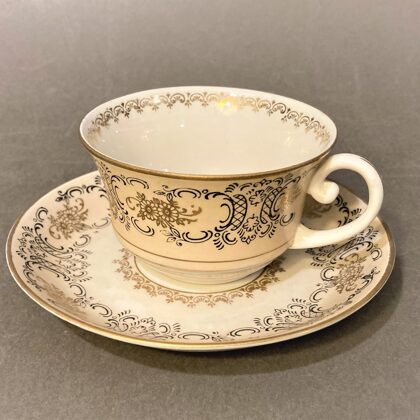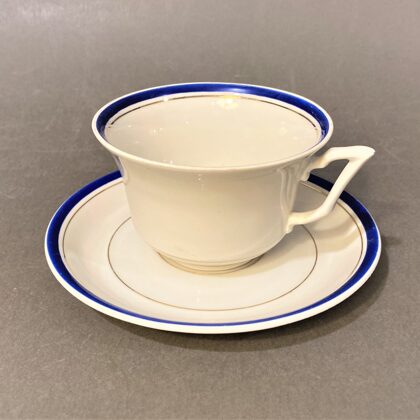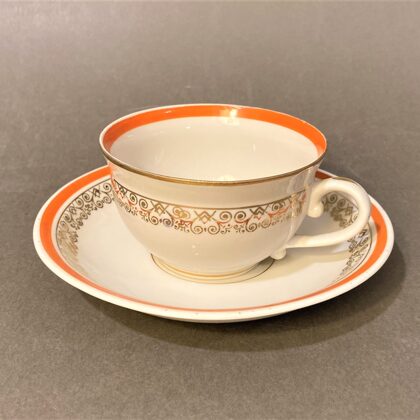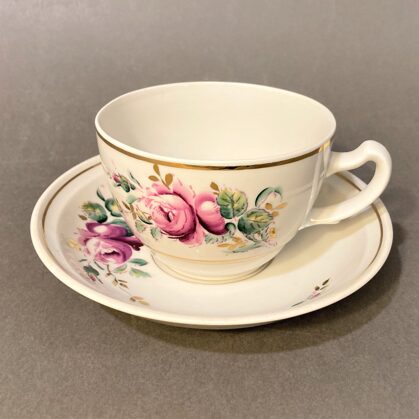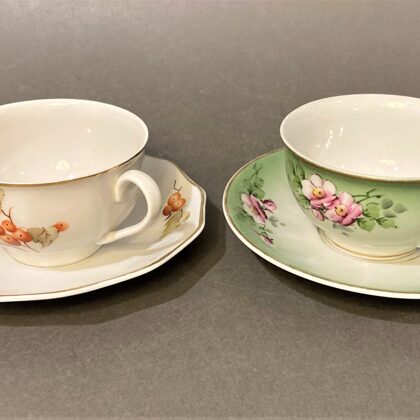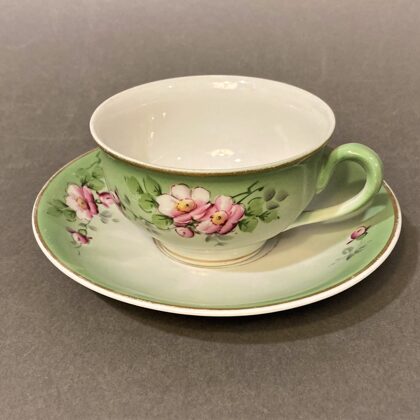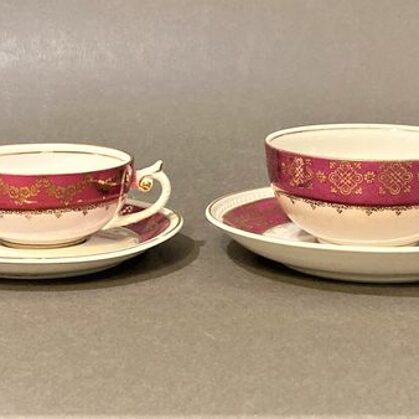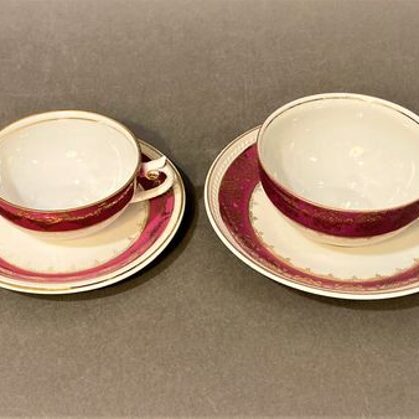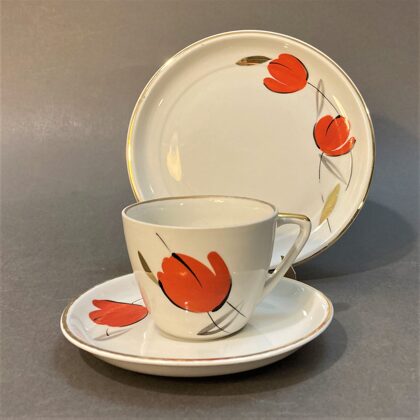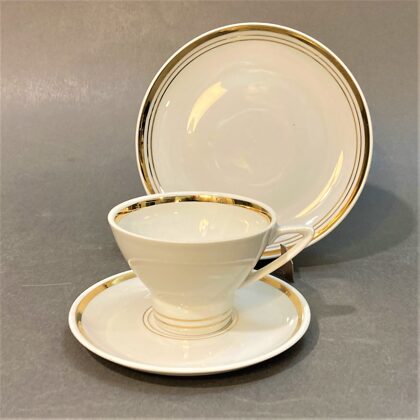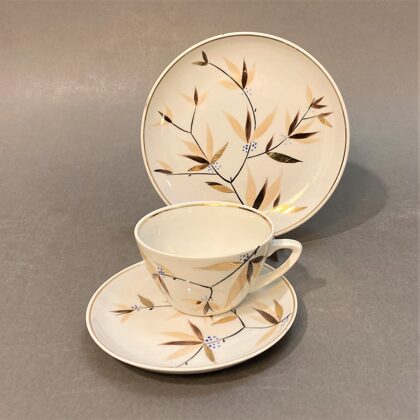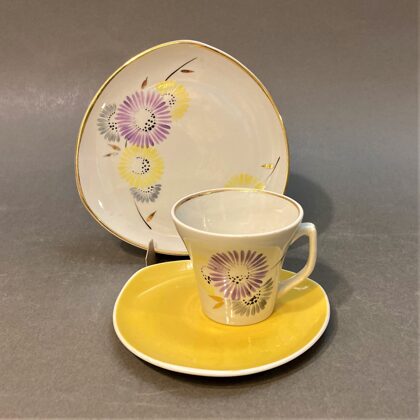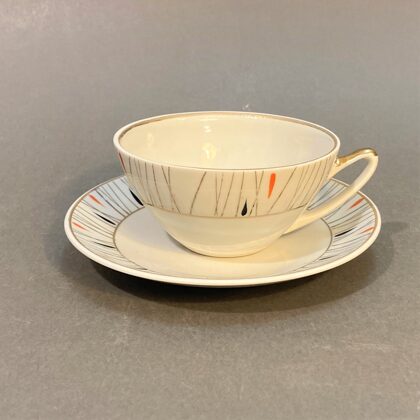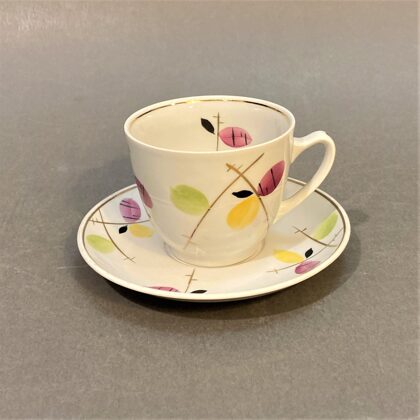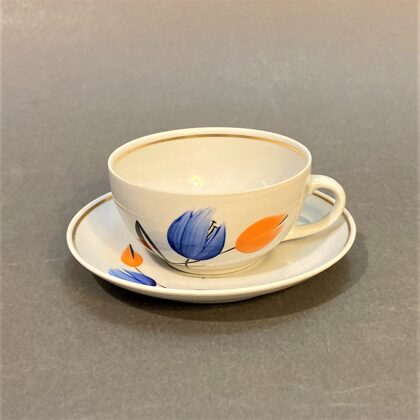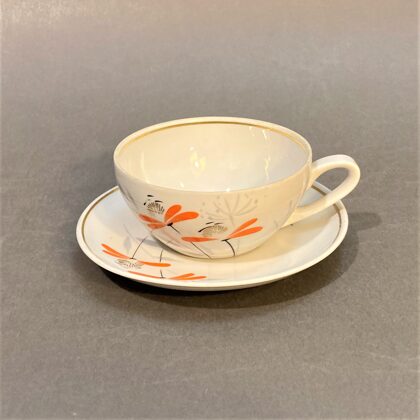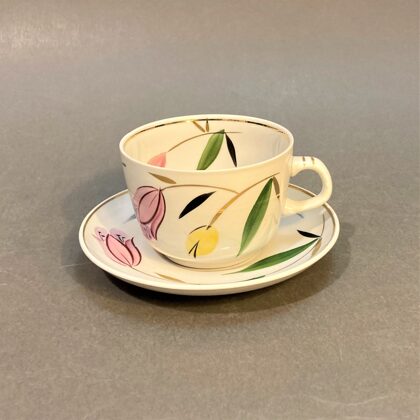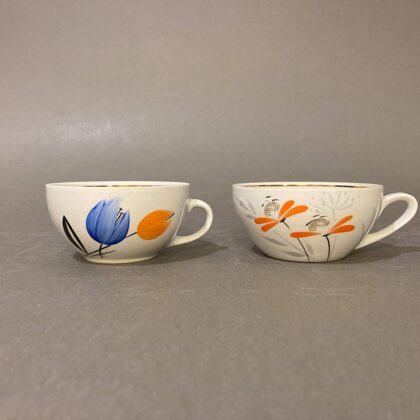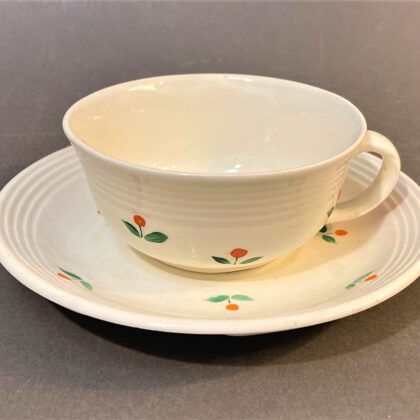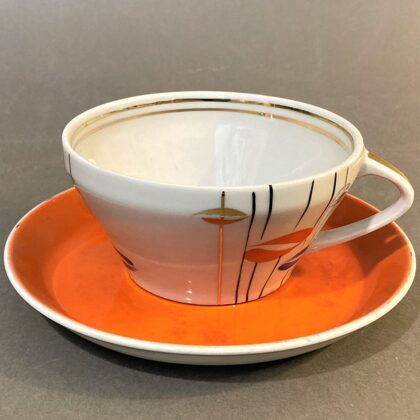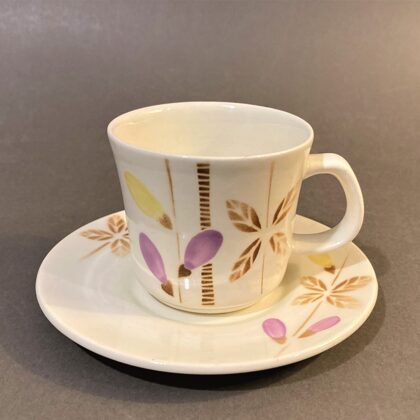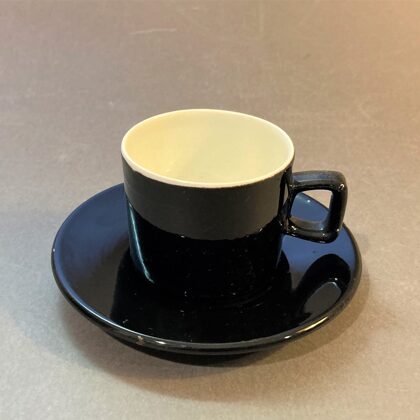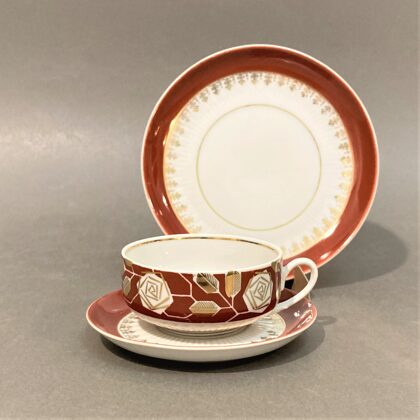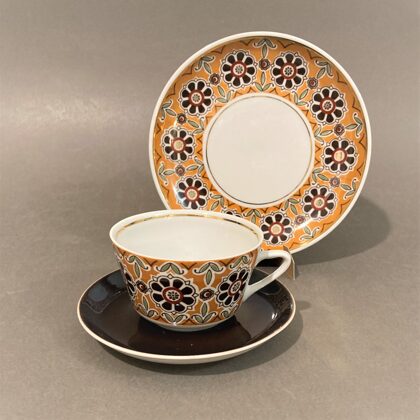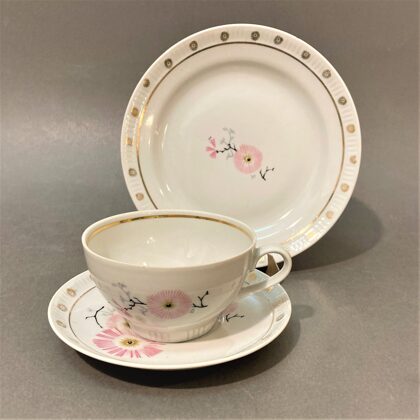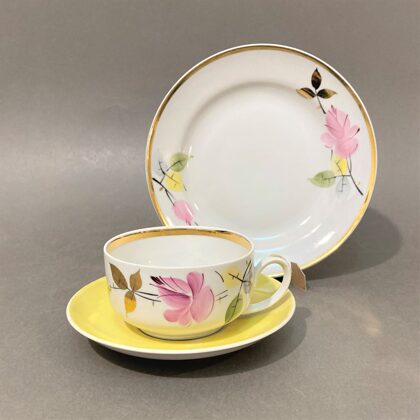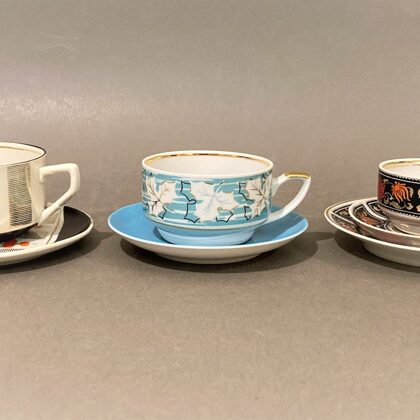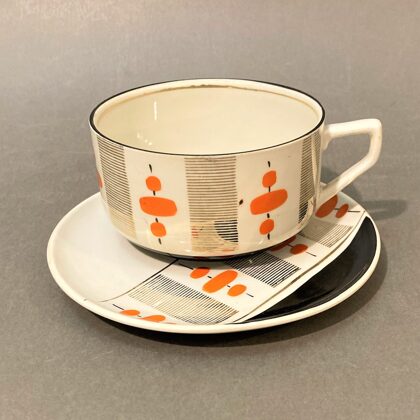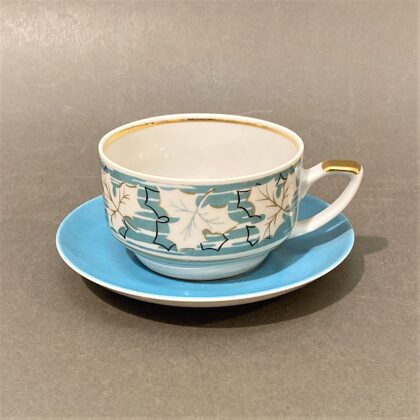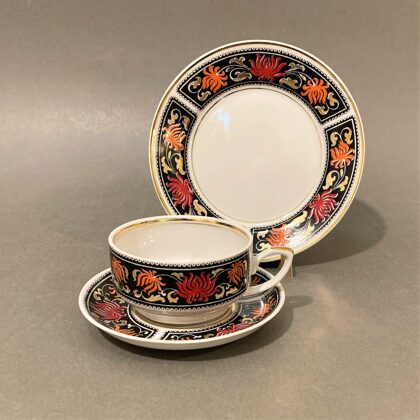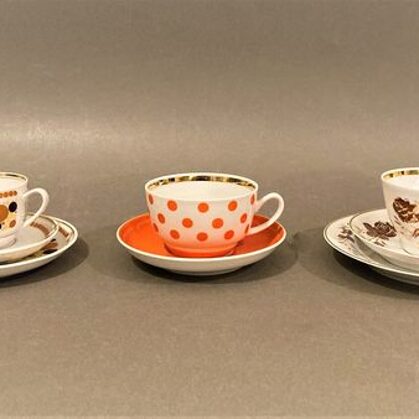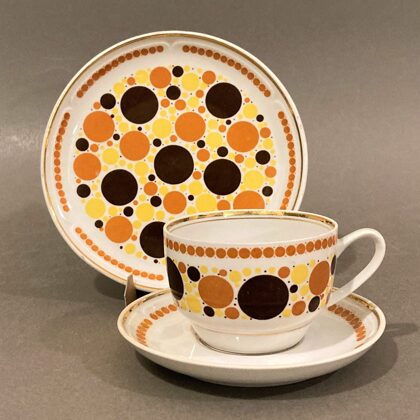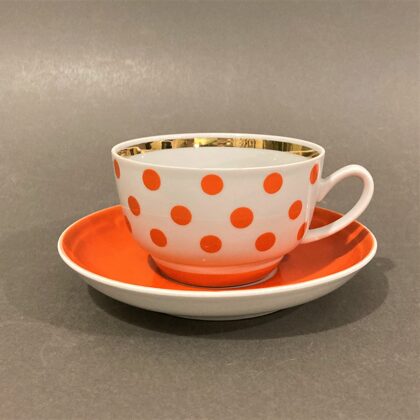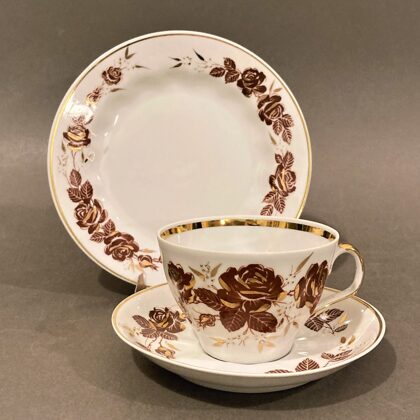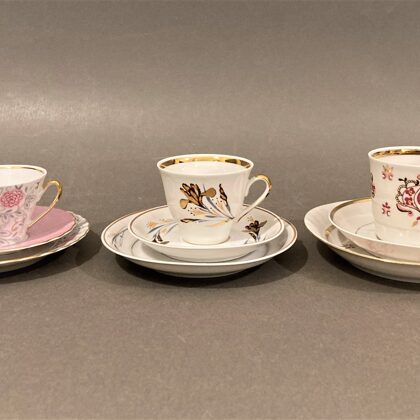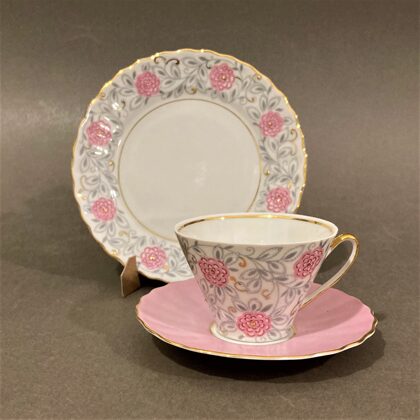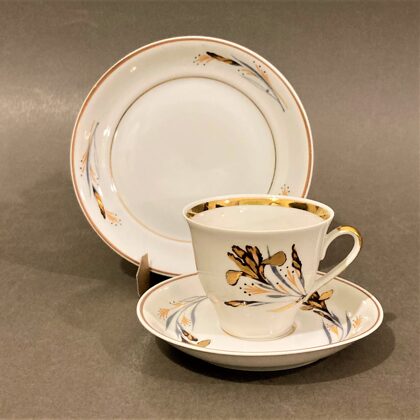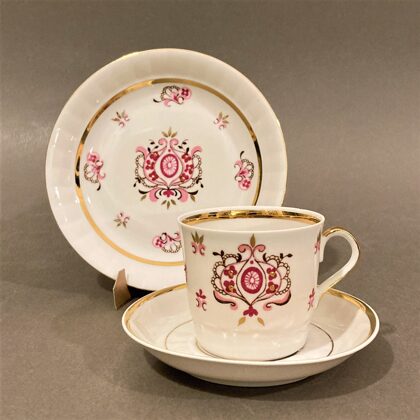Cup sizes of Riga Porcelain sets
When looking at the photos of the sets produced by Riga Porcelain factories it is not an easy task to tell the sizes of the cups. To bring some clarity to the issue some measurements have been done. Because the forms tend to differ in appearance, the size has been chosen as the unifying element. The cup was filled leaving some space for sugar and allowing to be lifted of the table without the hands shaking. Ladies and Gentlemen, please welcome our Old Masters:
(from the left) Rubenss 190ml, Ping-pong 150ml, Maija 190 ml, Tauta 180 ml, Bitīte 210 ml
The sizes of RPF and RPFF “Rubenss” do not differ.
The renowned "Laima" designed by Zina Ulste – the first set created in Riga after war. 1954 – 1958
"Laima" – coffe cup: 110ml; diameter of the cup 89mm, diameter of the saucer 138mm
"Laima" – tea cup: 190ml; diameter of the cup 100mm, diameter of the saucer 158mm
The first contemporary original set in Riga Porcelain history (after the classic
"Laima") was "Daina", designed by Zina Ulste, followed by "Alfa". In the other
factory "Ausma" was created by Anastasija Zumente. And last but not least in
our fantastic four is "Stella" by Beatrise Kārkliņa.
(from the left) Daina 110ml, Alfa 100ml, Ausma 100 ml, Stella 100 ml
DDuring the 1960s the two factories of Riga Porcelain produced both coffee sets and tea sets. The tea cups differed from their coffee sisters with a larger volume and wider forms. The very first one was "Sakta" created by Zina Ulste, the second factory was producing the set “Augstā" by Anatolijs Travņikovs at the same time. It was continued by the great trio of the tea sets of the 60s: "Marijka" (Taisija Poluikeviča), "Jūrmala" (Anatolijs Travņikovs) and "Viola" (Levons Agadžanjans). Because the cups of "Marijka" and "Jūrmala" are so similar a photo of the both together can be seen below.
(from the left) Sakta 180 ml, Augstā 180 ml, Marijka 180 ml, Jūrmala 180 ml, Viola 200 ml
(from the left) Fajansa 180 ml, Siluets 170 ml, Terēze 120 ml, Moka 75ml
(from the left) Saulīte 110 ml, Vasara 110 ml, Regīna 160 ml, Rīga 180ml
(from the left) Apetīte buljona komplekts 300 ml, Aija-2 tējas 200 ml, Aija-2 kafijas 100 ml
(from the left) Aija-1 kafijas 130 ml, Aija-1 tējas 180 ml, Sigulda 170 ml
"Riga porcelain factory" – having lost the word "faience" in the name and with an updated back stamp - began the mass production of the thin-walled dishes in 1970 and it became its specialty. The first one released was the mocca coffee set "Vita" by Zina Ulste, designed in 1969, followed by mocca coffee set "Marianna" by Ēriks Ellers in 1972 and coffee set "Nelda" by Levons Agadžanjans (1977-1978).
Government standards were less demanding of thin-walled porcelain, which allowed for more artistic freedom. These sets quickly became popular and "Vita" holds the record as the longest produced set by a local artist in "Riga porcelain factory" – its form was produced up until the closure of the factory and you can still come across a white, blank "Vita" frequently.
It is probably not possible to beat the wide diversity of decols of "Vita" and "Marianna" – the collections hold more than 40 variations of each of these sets and it is definitely not the final number.
